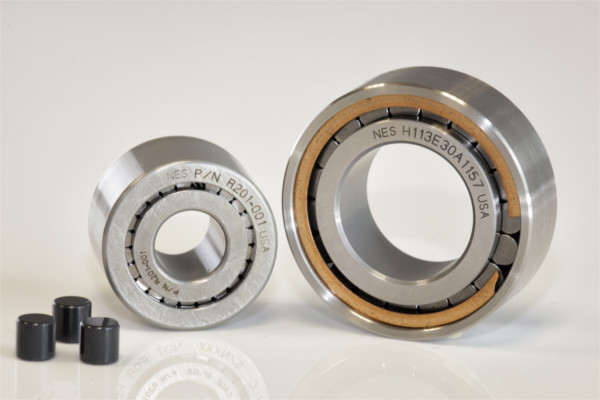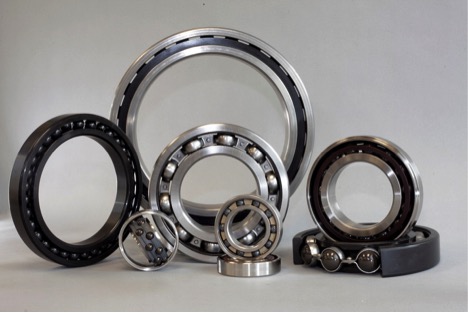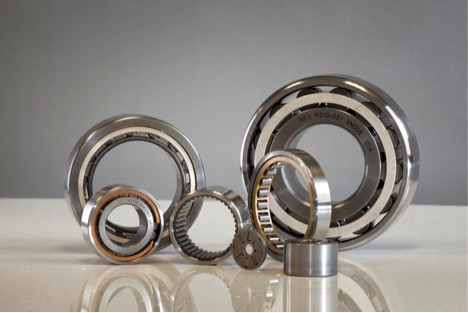Napoleon Engineering Services, the largest bearing inspection and testing facility in North America educates on global sourcing
Global manufacturing by original equipment manufacturers (OEM) and purchasing of bearings from global sources for industrial applications has skyrocketed over the last two decades. The playing field for the purchasing of bearings has changed significantly over this period of time. Historically, there were only a handful of bearing manufacturers who were called upon and trusted to supply bearings for high-reliability applications.

Today there are many hundreds of bearing manufacturers claiming to provide the same level of quality and service. Furthermore, the top name bearing manufacturers have exponentially increased their global footprint to ensure their own sustainability within the global market. So, how do design engineers and supply planning professionals mitigate risk when called upon to utilize global bearing sources when vast differences in design and manufacturing quality of bearings within the global supply chain may exist?
Napoleon Engineering Services (NES) has been leading OEMs through the global bearing qualification process for nearly 20 years providing technical information through bearing inspection, modeling, and testing programs to evaluate bearing design, manufacturing capability, overall quality of workmanship, and the relationship these attributes have on bearing life.
NES president and chief engineer, Chris Napoleon states, “I have two decades worth of inspection and testing data showing that not all bearing are created equal, even from the same source of supply. There are two reasons for this. The quality standards governing the design of a bearing are minimal, leaving plenty of opportunity for creativity. That is not necessarily bad until you compare a world class bearing manufacturer with substantial research and development behind their product to a manufacturer who lacks those resources.
Another challenge affecting the industry is the large quantity of acquisitions and joint ventures taking place, primarily by the large bearing manufacturers looking to establish a global manufacturing presence. I regularly find different design and manufacturing characteristics from a bearing manufacturer who has multiple plants around the world. However, this does not mean that a successful global supply base for bearings cannot be achieved. It just requires the use of a qualification program that provides the correct amount of risk reduction.”
Consider the internal design of a tapered roller bearing. It possesses several very important rolling and sliding contact surfaces that require evaluation. The cone raceway, cup raceway, and roller OD contours play a major role in stress distribution, reduction of roller end stresses, and the ability of the bearing to adequately support misalignment in the application. In addition to raceway contour or profile magnitude, there are different forms created by the manufacturing process that can be compared and analyzed. Cone rib flange and roller end are also important. The contours and surface finish values of these mating surfaces play a major role in bearing heat generation as well as break-in characteristics. Differences in surface finish and relationships between roller end and rib flange profiles can significantly affect the lubricant effectiveness.

These are just a few characteristics requiring examination to adequately judge a bearing’s quality level and reduce risk for the OEM. With that said, the capability of the manufacturing and inspection equipment used to produce and manage these characteristics has improved dramatically in recent years providing more bearing manufacturers with the ability to carry out design intentions that were not possible 20 years ago except by a select few. That’s good for the global purchaser, but validating their true capability through a detailed Source Qualification Inspection (SQI) program is vitally important to ensure application success for the OEM.
By measuring bearing characteristics an actual stress distribution analysis can be performed through modeling software. Depending on the criticality of the application a dynamic lab test based on expected failure mode should be performed to further reduce risk. For example, if the failure mode is fatigue related then a rolling contact fatigue test should be conducted to determine the combined effects of design, manufacturing, and material quality have on the empirical life.
An NES standard bearing test rig would allow for radial, axial and possibly moment loading at some predetermined speed and lubrication condition. The bearing supplier provides production bearings for testing that are run until failure. A Weibull analysis estimates the life of the population and allows for comparison of the empirical L10 life to theoretical life, based on the test conditions. This information is invaluable to the design engineer and often imperative to risk mitigation when global sources are considered for critical applications.
The use of inspection and testing programs to support bearing qualification programs is most valuable to the design engineer when used in combination. The addition of a solid inspection of a sample population of product before dynamic testing serves two purposes. First, if the inspection determines that the product possesses significant deficiencies in design, manufacturing or quality of workmanship, there may be no need to perform dynamic testing until the issues are addressed and corrected, saving valuable time and money on dynamic testing. Second, if dynamic testing shows one supplier to be significantly better than another, the addition of the inspection data in the analysis phase may allow the design engineer to assign cause to or explain the difference in the test results. Specific changes can now be made to the product that should result in improved bearing life and qualification of a new source of supply.

NES believes that successful utilization of global bearing suppliers requires:
Having a good understanding of the application and failure modes.
Defining the criticality of the bearing within the application.
Using a Source Qualification Inspection program and modeling software.
Use of standard bearing lab tests for empirical life comparisons.
Commitment in time and money for proper bearing qualification programs.
Napoleon indicates, “It takes more work on the part of the OEM than in past years to qualify todays’ global bearing supplier; however, if performed correctly there are significant benefits to be gained in having better control of your own destiny regarding product availability and cost, plus we’re here to help.

 Industry News
Industry News

